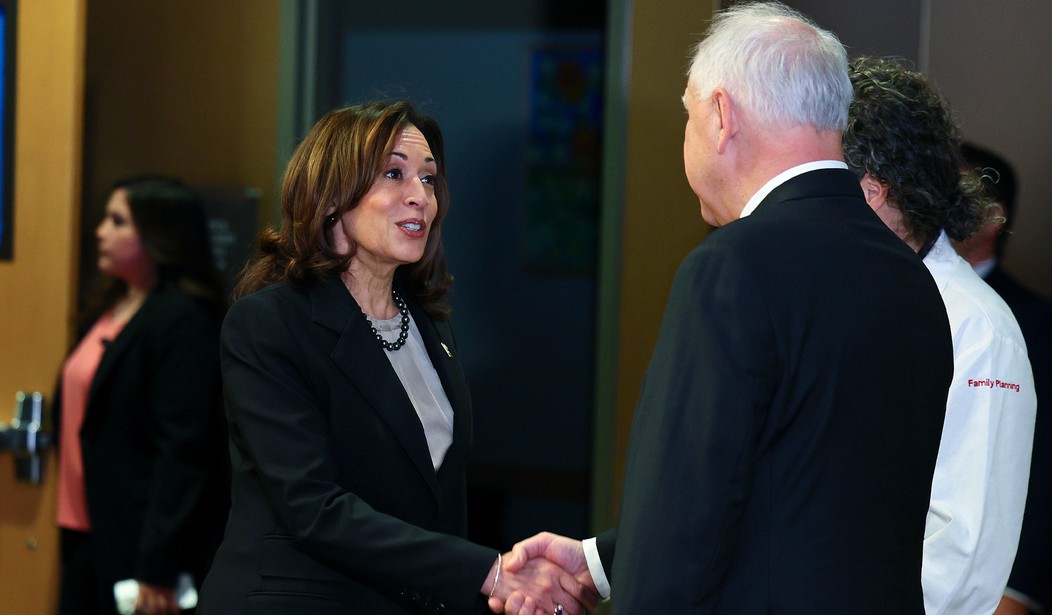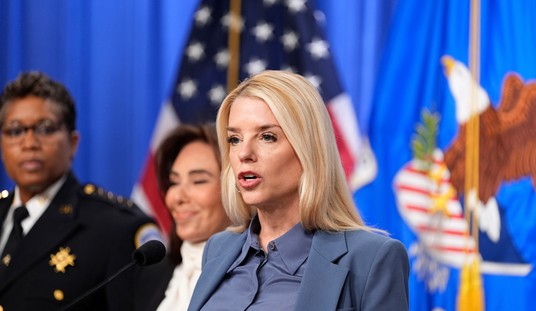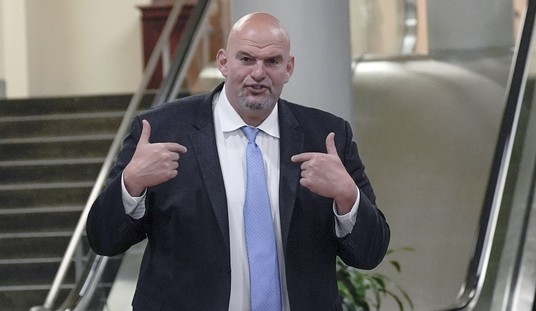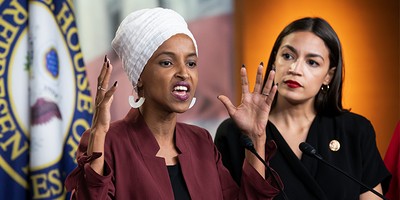The mainstream media has certainly been caught up in the excitement of polls showing Vice President Kamala Harris leading former and potentially future President Donald Trump at the national level and in battleground states. That could very well be part of a honeymoon period that is fading away, though, especially as not all polls show Harris leading.
One of the states to watch has been Michigan. This was the case even when Trump was set to face President Joe Biden before he dropped out, and looked to have better chances. This is also the case with the state's U.S. Senate race, with Democratic Senator Debbie Stabenow retiring.
Currently, RealClearPolling has Harris leading in Michigan by +2.1 over Trump. There are four polls in a row showing Harris leading there, though a Morning Consult/Bloomberg poll from last month showing her leading by +11 is rather far-fetched. Included in those polls is the AARP poll from Fabrizio/Anzalone, which shows Harris and Trump tied at 48 percent each.
With third-party candidates included, Trump leads Harris by 45-43 percent. Robert F. Kennedy, Jr enjoys 6 percent support.
New MICHIGAN poll by Fabrizio Ward (R) & Impact Research (D) for AARP
— InteractivePolls (@IAPolls2022) August 15, 2024
🟥 Trump: 48%
🟦 Harris: 48%
---
🟥 Trump: 45%
🟦 Harris: 43%
🟨 RFK Jr: 6%
🟩 Stein: 1%
🟨 West: 1%
—
Senate
🟦 Slotkin: 47%
🟥 Rogers: 44%
—
#138 + | 8/7-11 | 600 LV | R33/D32/I35https://t.co/uBnB1KGB74 pic.twitter.com/0jSmRSbWu3
Broken down by demographic, Trump leads +5 with older voters ages 65 and over against just Harris, and then by +6 with other candidates. He also leads by +2 with voters over 50 in both matchups.
Recommended
Curiously, young voters, ages 18-34, make it a different race when RFK, Jr is included. In the head-to-head matchup, Trump is at -1 with such a demographic but +5 in the full matchup.
An AARP press release highlights how this is very much a "Toss-Up" race, and that Michigan is indeed a battleground state. "Michigan is very much a toss-up state," Bob Ward, a partner with Fabrizio Ward, part of a bipartisan polling team that conducted the AARP-commissioned survey is quoted as saying. "We are seeing that older voters are going to be playing a big role here. They’re more motivated to vote than younger voters."
Another trend that looks good for Trump is that his and Harris' favorable ratings are about the same. While the vice president has a 45 percent favorable rating and a 49 percent unfavorable rating, Trump has a 46 percent favorable rating and a 50 percent unfavorable rating. While they're both at -4 among all likely voters, Harris has a -5 net favorable among those 18-49 while Trump is at a -2 net favorable. She does slightly better with voters who are 50 and over, with a -4 net favorable while he's at -5.
Trump performs even better regarding his recalled job approval, as a majority, 52 percent, say they approve, while 47 percent disapprove. Harris is at a 50 percent disapproval level, while just 43 percent say they approve. Biden, whom the Trump-Vance campaign has rightfully tied Harris to, has an even worse approval rating, with just 41 percent saying they approve while 57 percent disapprove.
Tellingly, Trump enjoys a higher approval rating among Republicans (+93) than either Harris (+83) or Biden (+74) do with Democrats. Trump is also even with Independents, while Harris is at -6 with the key demographic and Biden is at -22.
The press release also has plenty to say about Independents:
Michigan was a red state that flipped to blue four years ago when Biden won it, says Paula D. Cunningham, state director of AARP Michigan. Although this poll shows “people still are exploring and researching” the candidates and their stances on issues, Cunningham says independent voters can make a difference.
“We have a large number of independent voters, almost 30 percent, and they can swing an election either way,” Cunningham says.
Michigan is considered a battleground state in the 2024 presidential election. In 2020, Biden won the state by 2.8 percent — 154,000 votes. He received 50.6 percent of the vote that year, and Trump received 47.8 percent. The candidate who prevails in Michigan this November will receive 15 electoral votes toward the 270 needed to win the presidency.
Returning to Ward's comments and the matter of motivated voters, 83 percent of overall likely voters said their level of motivation is at a 10. Going back to young voters, those ages 18-34 are at the lowest of any age demographic or any demographic overall, with only 71 percent saying their level of motivation is at a 10. Eighty-eight percent of voters 50 and over say their level is at a 10, and it's 90 percent of voters 65 and over.
There's more to say about those older voters in the press release:
Interest in voting in November is high, especially among older adults. Eighty-three percent of all likely Michigan voters are “extremely motivated to vote,” a number that increases to 88 percent among voters 50-plus.
“It tells us that you can expect this year to look like past elections in which older voters have been a majority of the electorate in Michigan, and that’s why candidates need to be focused on the issues that matter to them,” says Jeff Liszt, a partner with Impact Research.
Voters 50-plus who plan to split their ticket by supporting candidates from both parties in different races also will play a key role, Liszt says. The poll shows that 43 percent of older voters plan to vote a straight Republican ticket, 41 percent of them plan to vote a straight Democratic ticket and 16 percent of them plan to split their ticket, Liszt says.
“So there are enough voters up for grabs who are over age 50 to swing the presidential race, to swing the Senate race, to swing competitive House races,” Liszt says. “A lot of races in Michigan are going to be decided by voters over 50. We also know that voters over 50 are going to be the majority of the electorate.”
When it comes to the issues that voters 50 and over care about, as their first and second choice, "Immigration and border security" comes in first at 32 percent. "Inflation and rising prices" is next at 27 percent, while "The economy and jobs" is a close third at 24 percent. Although "Threats to democracy" comes in as a close fourth with 21 percent combined for first and second choice, the 15 percent who say it's their first choice as a top first issue, at 15 percent, is second only to the 18 percent who say immigration.
There's also a separate section on "Key issues for voters 50+," such as Social Security and Medicare. As the press release summed up:
Likely voters 50-plus ranked Social Security (81 percent), Medicare (72 percent) and policies to help older adults live independently at home as they age (69 percent) as extremely important when deciding on a candidate. Also among their top concerns are the cost of utilities and prescription drugs (both 66 percent) and housing (59 percent).
Finances are top of mind for older voters in Michigan, 59 percent of whom are worried about their personal financial situation. Sixty-one percent of voters 50 and older say Social Security is or will become a major source of income for their household. The majority of older adults surveyed, 92 percent, say they would be more likely to support a candidate who ensures older workers receive their Social Security benefits.
The concern about economic issues among voters isn’t surprising, Cunningham says.
“People are either threatened by them (economic issues), or they feel like their Social Security’s not going to be there,” she says.
...
“Across the spectrum, the economy is the looming sort of issue set that voters want to hear candidates talk about,” Ward says.
It's not merely voters 50 and over who are "worried" about their financial situation, 65 percent of overall likely voters are. In fact, a majority of every demographic, and not just to do with age, is worried. The 76 percent of Republicans and 72 percent of voters 18-49 are the most likely to say so.
Speaking of the closely watched Senate race between Democratic Rep. Elissa Slotkin and former Republican Rep. Mike Rogers, Slotkin only has a slight edge of +3 among all likely voters, 47-44 percent support. This sounds about right, considering that the forecasts range from "Toss-Up" to "Lean" or "Tilt Democrat."
The poll was conducted August 7-11 with 1,382 likely voters. The poll noted that this "includes a statewide representative sample of 600 likely voters, an oversample of 470 likely voters age 50 and older, and an additional oversample of 312 Black likely voters age 50 and older... The margin of sampling error at the 95% confidence level for the 600 statewide sample is ±4.0%; for the 800 total sample of voters 50+ is ±3.5%; for the 400 total sample of Black voters 50+ is ±4.9%."

























